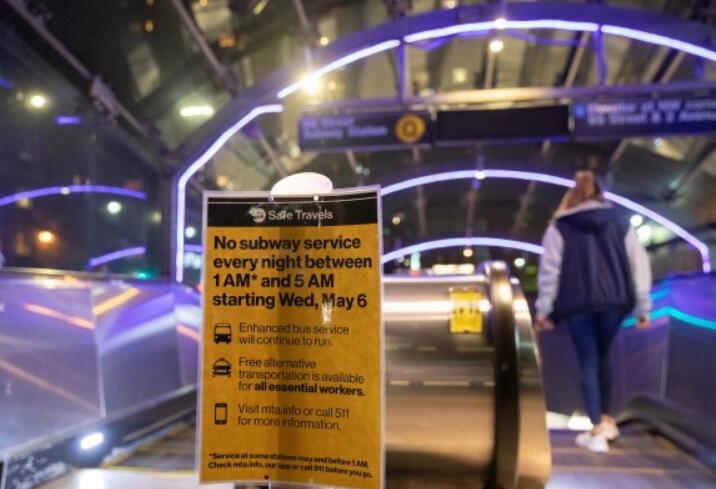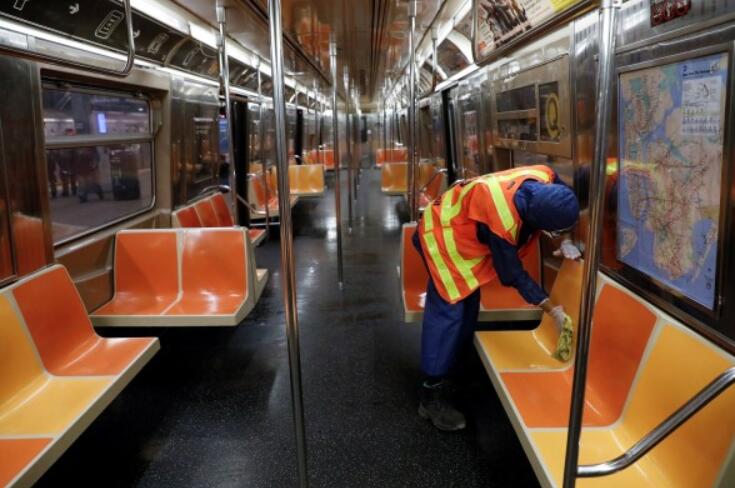From next week, New York’s Metropolitan Transportation Authority (MTA) will use ultraviolet light to help remove Covid-19 from its subways, buses and commuter trains as the technology has shown to eradicate the virus from surfaces.
In a report by The Sun, scientists from Columbia University and officials of the Metropolitan Transportation Authority announced on Tuesday, May 19, the new cleaning approach. The ultraviolet technology has been found to “blind” and kill the coronavirus on train surfaces.
“The good news here is that UV is a proven and effective technology and it is 100% safe to humans after it is applied,” said MTA Chair Pat Foye who was quick to say that this is a not cure-all measure. He said that there is still much work to do, “but this is a significant and promising new development.”
New York had at least 28,480 fatalities while MTA lost at least 120 of its workers due to COVID-19. The MTA will spend about $1 million for 150 pcs double-headed lamps and begin zapping the interior of subway cars in the yard. While such technology has been used to clean hospitals and urgent-care facilities, agency officials say it’s the first time ultra-violet light is being used to kill the cornavirus on public transit infrastructure.
“This has never been done, as far as I know, on the scale that we plan on doing it with the knowledge that it kills Covid-19,” Mark Dowd, the MTA’s chief innovation officer, told reporters Tuesday when it unveiled the devices. “It’s exciting for us to be able to do this pilot at the same time that Dr. Brenner’s clinical research has shown that the UVs do kill–rather efficiently–the SARS-CoV-2 virus,” he said.
The MTA’s ridership has fallen dramatically as people work from home and avoid using public transportation. To bring riders back, the agency plans to use innovative disinfecting regimes to help sanitize its fleets and restore ridership confidence.
The MTA anticipates cleaning and disinfecting expenses will cost hundreds of millions of dollars in 2020. New technology may help decrease those costs, officials said.
The MTA will first use the ultra-violet lights on its subways before moving on to buses. After UV passengers have left the train, the UV-A light units flash every five seconds and are said to kill viruses. The MTA so far has acquired 158 devices with 230 lamps in total amounting to millions, although the exact cost is not revealed.
An NY1 report said these devices were bought from Colorado-based company Puro Lighting for more than $6,500 each. This would still be cheaper than the nightly shutdown of the New York subway to allow cleaning and disinfecting of the trains like how New York Gov. Andrew Cuomo announced earlier this month.
David J. Brenner, director of the Center for Radiological Research at Columbia University, said preliminary studies conducted by his center have shown that ultra-violet lighting kills the Covid-19 virus. Brenner has been the MTA’s technical adviser on this project.
“There is still much work to be done, but this is a significant and promising new development,” Pat Foye, the MTA’s chief executive officer, told reporters. “It’s in keeping with our pledge to consider every possible action to keep New Yorkers, our customers and employees safe.”

Can UV light really kill the coronavirus?
Dan Arnold answers no, unless we are “frying people” under the sun, according to a BBC report.
Arnold works in UV Light Technology, a company providing disinfecting equipment to hospitals, pharmaceutical companies, and food manufacturers in the UK sees a peak in UV light sales amid the COVID-19 crisis.
There are three types of UV rays from the sun: UVA, UVB, and UVC. UVA takes up the majority of the ultraviolet radiation that reaches the Earth. It penetrates deep into the skin, causing up to 80% of skin aging like wrinkles and age spots.
The UVB can damage the DNA in the skin, causing sunburn and skin cancer. Both can be blocked out by sunblock lotions and creams.
The third type, UVC, consists of a shorter, more energetic wavelength of light, which can destroy genetic material in humans or viral particles. This dangerous ray is filtered out by ozone before it reaches human skin.
Arnold said UVC is “really nasty stuff” that humans should not be exposed with. “It can take hours to get sunburn from UVB, but with UVC it takes seconds,” said Arnold. He also added that exposing eyes to the rays would be 10 times gritty as looking at the sun and even cause cataracts.
However, since scientists have discovered to harness UVC to kill microorganisms in 1878, artificially produced UVC has become a standard method of sterilization in hospitals, airplanes, offices, and even factories.
Currently, a concentrated form of UVC is now being used to fight COVID-19. In China, blue light is lit every night to disinfect whole buses while UVC-emitting robots called squats are cleaning hospital floors. Banks continue using UV light to disinfect money.
The Latest Ground-breaking technology “far UVC light”
Last month, ABC News has reported that Dr. David Brenner of Columbia University discovered a certain kind of light can kill airborne viruses, including coronavirus.
The director of the Center of Radiological Research at Columbia University has been studying UV light as a potential life-saving weapon against the virus.
Brenner found out that a narrow band of UV light called far-UVC light cannot penetrate skin living cells. “That’s why it’s safe for human exposure,” said Brenner.
Earlier, Brenner’s team has already tested two types of coronaviruses and is currently testing SARS-CoV-2. “We saw we can kill 99% of the virus with a very low dose of far-UVC light,” said Brenner adding that he believes the results will be similar to earlier ones.
May 20, 2020

